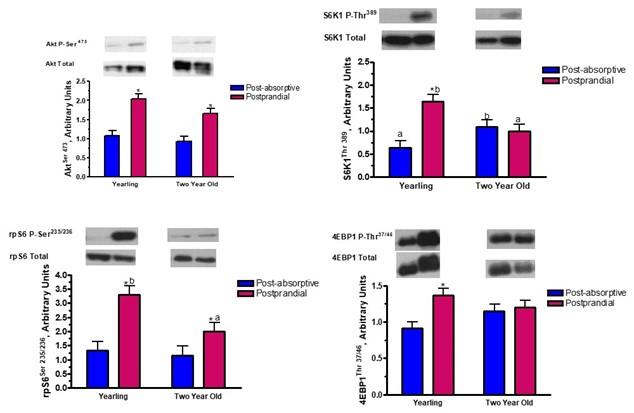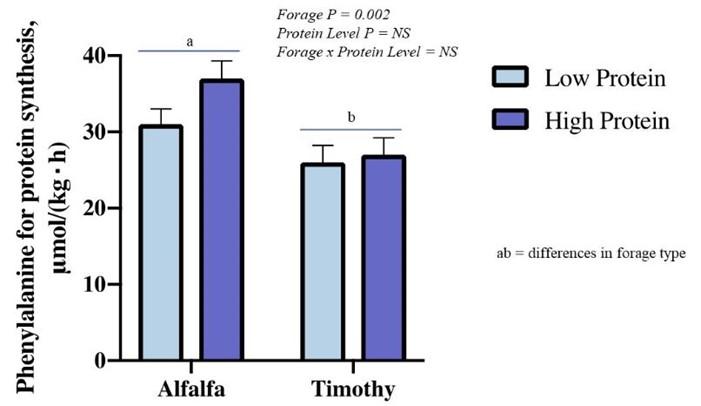UK Equine Research Showcase Recap: Importance of Protein Synthesis in the Growing Horse
On Jan. 19, the University of Kentucky hosted the second session of its 10th Annual UK Equine Research Showcase. More than 100 equine professionals and students tuned in to the virtual webinar to hear about nutrition and pastures for the growing horse. Presenting sponsors for the event included BET, Kentucky Performance Products, McCauley’s, Merck, Rood & Riddle Equine Hospital and Tribute Equine Nutrition.
Kristine Urschel, PhD, associate professor in the Department of Animal and Food Sciences, was the second in the lineup to discuss the importance of amino acids and protein synthesis in maturing, young horses. Urschel reviewed why protein is important for the body, delving into how protein is synthesized and highlighting noteworthy research in horses 6 months to 2 years old.
Proteins can have many different roles in the body. Some types of proteins may be responsible for a horse’s structural makeup, such as their muscles and collagen. Other proteins help with metabolic processes, for example, transportation of important substances from the bloodstream across cell membranes where those substances can then be used.
There are 21 different amino acids that link together to form proteins. These amino acids are joined together in various combinations by peptide bonds to form long chains. Each individual amino acid chain has a unique side chain which will ultimately determine the three-dimensional shape of the protein and the role of that protein within the horse’s body. As noted, amino acids play a major role in protein synthesis; however, amino acids are also key for other functions in the horse, including the synthesis of additional metabolically important molecules. One of these molecules, creatine, resides in the muscle to assist with energy metabolism in the growing horse.
Why do we care about protein in the growing horse?
According to Urschel, when horses are growing, they are putting down a lot of muscle.
“At birth, a horse will be composed of about 35% muscle and by one year, muscle development has increased to 45%. A mature horse can reach up to 55% in muscle mass,” she said. “Muscle mass is defined by the balance between the rate protein is being synthesized compared to the rate protein is breaking down. In a growing horse, we need protein synthesis to exceed protein breakdown to allow a net gain of protein mass.”
In order for protein to be synthesized in a cell, first, DNA will need to be transcribed into mRNA to serve as the blueprint for the protein composition. The mechanistic target of rapamycin (mTOR) signaling pathway will then send a message to the ribosome in the cell to begin assembling the amino acids necessary to build the protein. These processes within the cell cannot occur unless the cell is equipped with energy reserves that it can make from dietary sources, mainly glucose and fatty acids.
With the understanding of proteins and how they are synthesized, Urschel then discussed her research, honing in on the mTOR signaling pathway and dietary amino acid adequacy as two key components for protein synthesis.
The mTOR signaling pathway, within the cytoplasm of the cell, is comprised of multiple different proteins which interact with each other and either activate or inhibit the mTOR signaling pathway for protein synthesis. Urschel and researchers in her lab have studied the mTOR signaling pathway by collecting muscle biopsy samples. The Western blot analysis method is used to study the activation of the proteins and their response to different stimuli.
“If it is found that when the proteins that we study within the mTOR signaling pathway are phosphorylated, the environment is conducive to protein synthesis”, Urschel said.
Data was reviewed from a study conducted by Urschel looking specifically at yearling and 2-year-old Thoroughbred horses (Figure 1). They analyzed the mTOR signaling pathway activation in a fasting state and 90 minutes following a high protein feeding. They found mTOR activation from a fasted state to a post high protein meal state resulted in an increase in phosphorylation, which suggested an increase in activation of protein syntheses.

“What was interesting was that it seemed the activation in protein synthesis was greater in the yearling horses than the 2-year-old horses,” Urschel said.
This begs the question, how much protein is needed to maximize mTOR activation for protein syntheses? In a recent study completed by Urschel’s post-doctoral scholar, Caroline Loos, PhD, activation was analyzed in mature horses. The data showed the level of activation is maximized at 0.25 grams of protein intake per kilogram of body weight, which equates to approximately 125 grams of protein for one meal.
According to Urschel, while there has not been any research conducted on the level of protein needed for the maximum activation of mTOR signaling in younger horses, this recent study does provide some insight into the maximum activation levels in horses overall.
“Just because this signaling pathway is maximally activated, this does not mean we are at the maximum rate of protein synthesis,” Urschel said. “The mTOR pathway measurements taken mostly look at getting the process started or the equipment assembled and doesn’t actually tell us how much protein is being made.”
How much protein is being synthesized is going to depend on additional external factors such as energy levels within the cell, as well as having sufficient amino acids, she said.
“There has not been much mTOR signaling work done in growing horses, but there are lots of exciting opportunities for the future,” Urschel said.
According to Urschel, based on the research that has been conducted, one can conclude muscle seems to be most sensitive to feeding stimuli early in life. But there are still more questions. If there is a prolonged disruption in the feeding cycle during a young horse’s life, could this have a negative impact on muscle development? Furthermore, does exercise play a synergistic role with feeding in growing horses to aid in muscle development, something which has been shown in other species? These are all important questions for possible future research studies.
Urschel then transitioned from discussing the mTOR signaling pathway to the use of dietary amino acids in growing horses. The National Research Council (NRC) has published nutrient requirements for horses which include the amino acid lysine. Currently, lysine is the only amino acid with enough data to be listed as a requirement.
Urschel explained, “Protein syntheses needs specific amino acids in specific ratios.”
When a specific amino acid is unavailable, protein synthesis is halted until the amino acid is available for use. Urschel displayed a barrel illustration in her presentation (figure 2) displaying various levels of amino acids. Protein synthesis is restricted by the most limited amino acid in the diet. In a well formulated diet, there should not be any limiting amino acids; however, it has been found in growing horses that lysine, threonine and methionine are potentially limiting amino acids.
In Urschel’s lab, amino acid metabolization is studied through a stable isotope method to determine how well an amino acid can be used for protein synthesis. If an amino acid is not used, it is then degraded in the body and converted into CO₂ that is exhaled by the horse. For example, phenylalanine oxidation is inversely related to whole-body protein synthesis. If a limiting amino acid exists in a diet, less phenylalanine can be incorporated into the protein and more phenylalanine will be oxidized into CO₂ which is then exhaled by the horse.

In another study, six Thoroughbred weanlings were fed high and low protein diets consisting of two different concentrates in conjunction with alfalfa hay cubes. The high protein diet was well over the NRC protein requirement for this age group and the low protein diet was within the NRC requirement for this age group. The isotopic method was then used to determine if a limiting amino acid existed. The data showed a lower protein synthesis rate in the low protein diet versus the higher protein diet indicating a limiting amino acid. It was thought the limiting amino acid may be threonine based on previous research showing this specific amino acid as limited in Thoroughbred weanlings.
This led to another study investigating threonine supplementation in weanling Thoroughbreds. Six weanling Thoroughbreds were fed timothy hay cubes and a commercial growing horse concentrate top-dressed with either a threonine or glutamate (non-essential amino acid) supplement. With this combination of feed, there was no evidence to support threonine as a limiting amino acid.
In a recent study by a UK graduate student that has not yet been published, the effects of forage type and ration balancer protein content on whole-body protein synthesis in yearling Thoroughbreds was studied. This study looked at data from eight different Thoroughbred yearlings fed combinations of either timothy or alfalfa hay with either a high or low protein ration balancer. The results of this study (Figure 3) showed that alfalfa forage overall resulted in higher rates of protein synthesis than the timothy hay. Interestingly, the data did not show higher rates of protein synthesis between a high or low protein concentrate when fed with either of the two forages. Therefore, the data did not indicate that there was a limiting amino acid present when either the timothy or the alfalfa forage was paired with a low protein ration balancer. The observed benefit of the alfalfa over the timothy forage may have been due to a greater energy intake to support protein synthesis with the alfalfa forage. Additionally, it was found that the added protein and amino acids in the higher protein treatments were ultimately excreted by the horse. This caused an excess of nitrogen to be excreted in the urine and ultimately resulted in an increased amount of nitrogen released into the environment.

In conclusion, Urschel reiterated protein is an essential nutrient for the growing horse and the valuable role protein plays for muscle development. After reviewing the mTOR signaling pathway and dietary amino acids, the research speaks for itself. Forage based diets coupled with an appropriate ration balancer can provide adequate amino acids for the growing horse.
Erin DesNoyers is operations coordinator for UK Ag Equine Programs.
